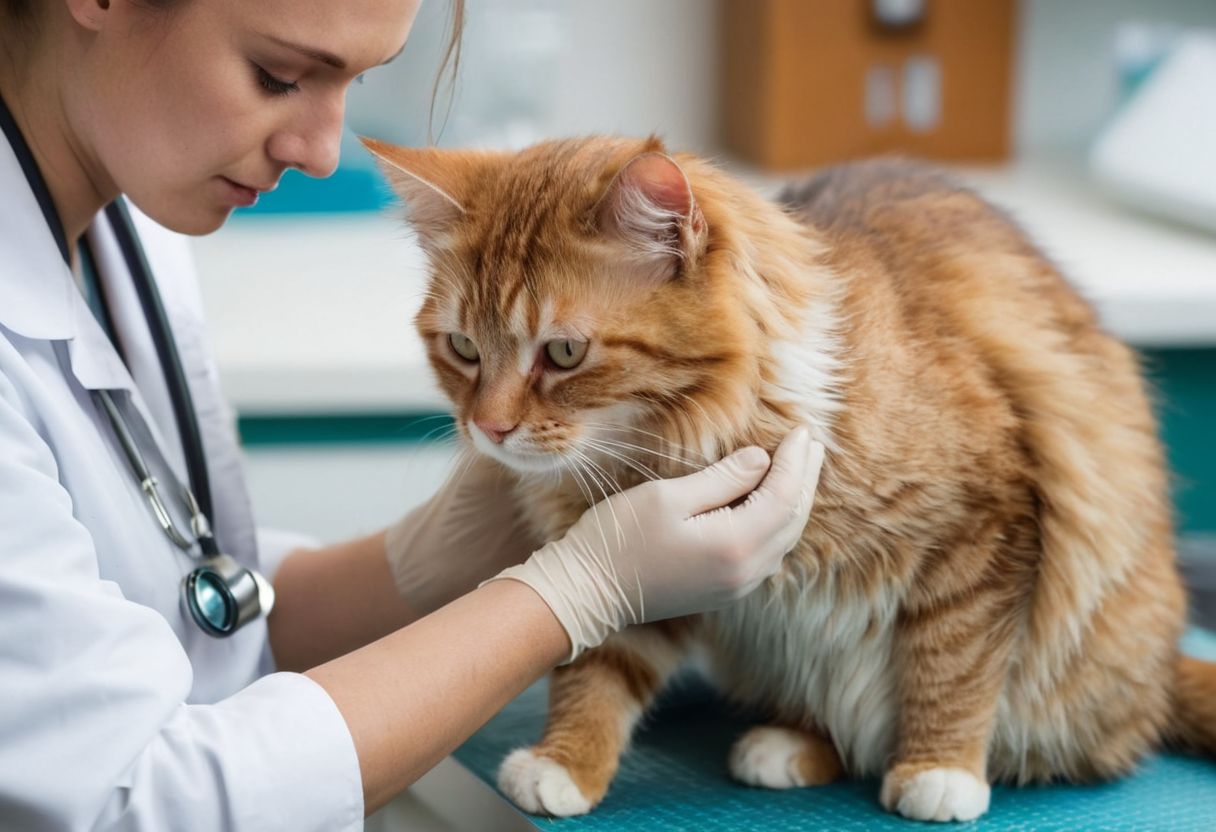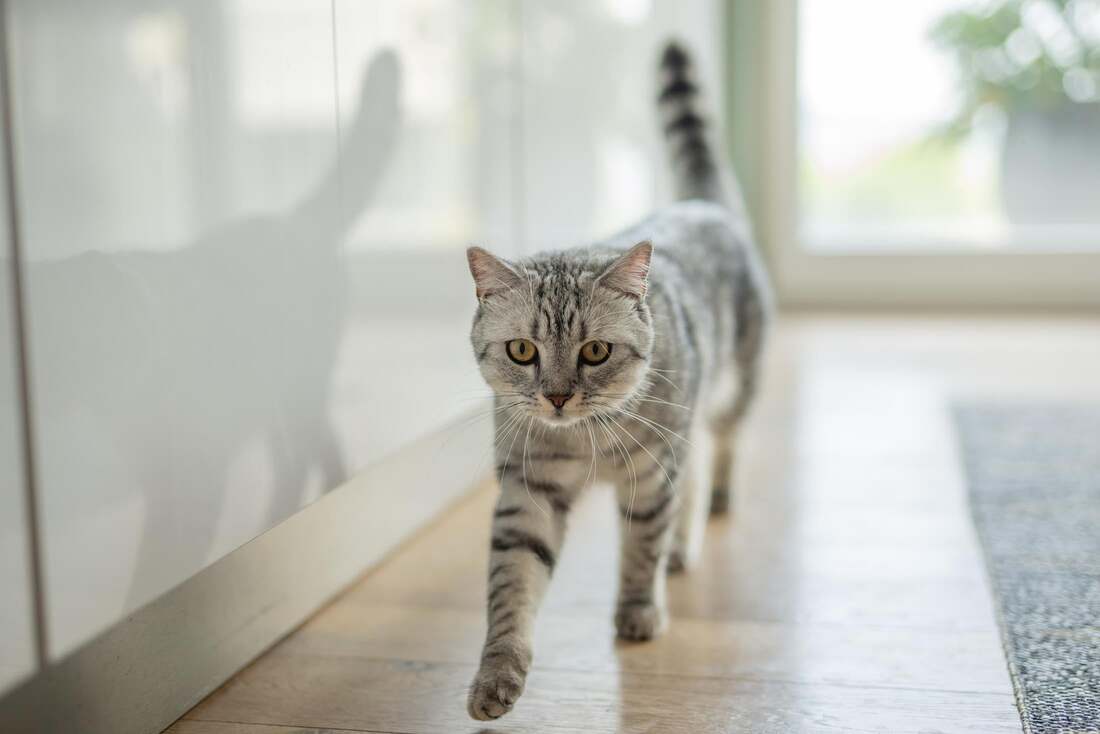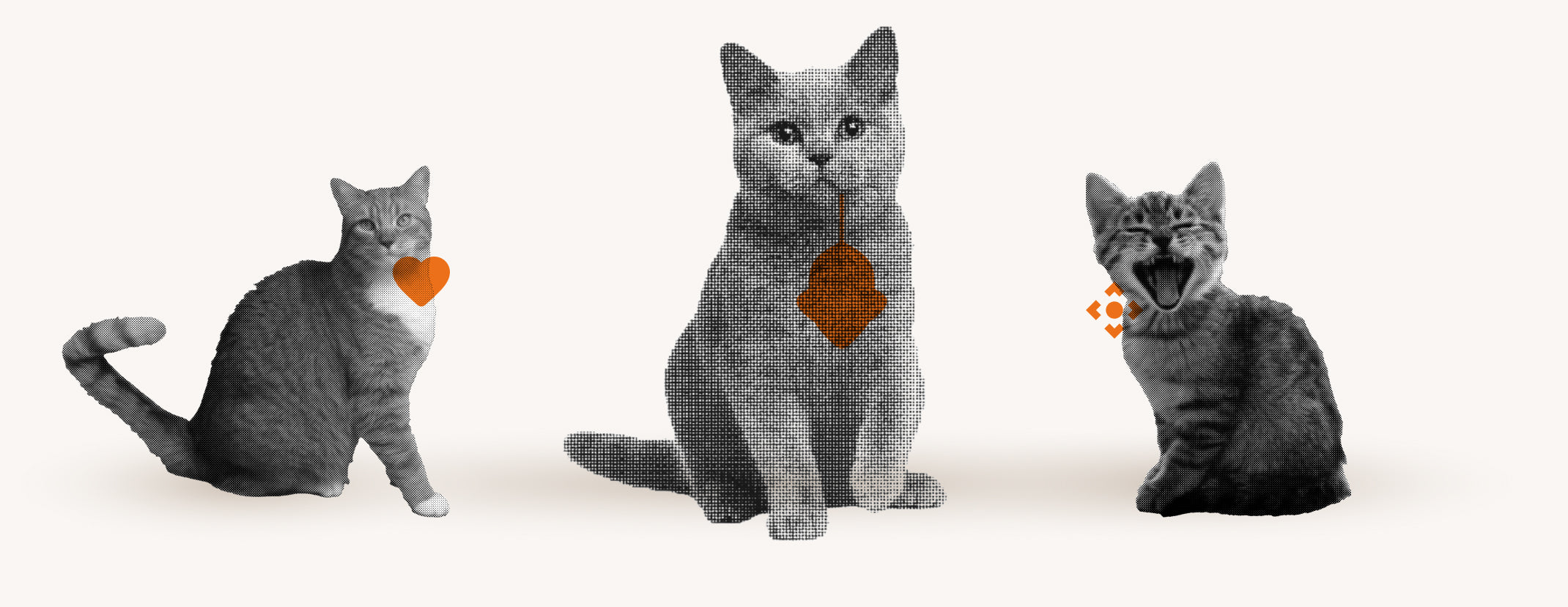Did you know that cats often hide their symptoms of illness?
This makes it difficult for cat owners to detect early when something is wrong.
To protect your cat from disease, you should have it vaccinated regularly, ensure it has a balanced diet and take it to a vet immediately if anything unusual occurs.
In this blog post, you will learn all about the most common cat diseases, how to recognize symptoms, diagnostic methods, treatment options and how you can take preventative measures to ensure your cat has a long and healthy life.
Recognizing Symptoms of Cat Diseases

Cats often show symptoms of illness very subtly, which is why it is important to pay attention to the smallest changes in their behavior or physical condition. The most common symptoms that can indicate illness include changes in eating behavior, lethargy, or unusual sleeping behavior. Visible changes such as shaggy fur, wounds, or swelling should not be ignored either.
Some specific symptoms require immediate attention. These include:
- Diarrhea or constipation , which may indicate gastrointestinal problems.
- Frequent urination or blood in the urine , which may indicate urinary tract infections or kidney disease.
- Apathy or excessive fatigue , which can be signs of a variety of illnesses.
These symptoms are signs that a visit to the veterinarian is necessary to determine the exact cause and initiate appropriate treatment.
Detecting signs of illness in cats early
To detect illness in your cat early, it is crucial to pay attention to the first signs. Watch your cat closely and be alert to changes such as loss of appetite, increased need for sleep or a sudden aversion to being touched, as these can indicate pain. Behavioral changes such as increased irritability or withdrawal are also important indicators. Detecting these signs early can be crucial to protecting your cat's health and preventing serious illness.
Diagnostic Methods for Cat Diseases

If you suspect illness, the first step is to go to the vet. The vet will use several diagnostic methods to find out what is wrong with your cat. The most common methods include a physical examination , where the vet will palpate the cat, measure its weight, and check its vital signs.
Further diagnostic methods may vary depending on the symptoms:
- Blood tests help detect infections, inflammation or problems with red blood cells.
- A urine or stool test can reveal parasites or other internal problems.
- Imaging techniques such as X-rays or ultrasound are useful for visualizing problems inside the body.
Some diseases require special tests, such as a rapid test for certain viruses. The saliva test can also be used to diagnose certain viral infections. These tests are quick and can often be performed at the first vet visit, allowing for quick and effective treatment.
Treatment Options for Cat Diseases

If your cat is sick, there are several treatment options that may vary depending on the type and severity of the illness. Traditional medical treatment usually includes medications prescribed by the vet, such as antibiotics, painkillers or anti-inflammatory drugs. These are especially important when dealing with acute or severe illnesses. Additionally, special diets or surgical interventions may be necessary to help your cat. It is crucial that an early diagnosis is made so that treatment can begin as soon as possible.
In addition to traditional medicine, there are also alternative treatment methods that are becoming increasingly popular. These include:
- Homeopathy: Small doses of natural substances are used to strengthen the body’s self-healing powers.
- Acupuncture: By inserting needles at specific points on the body, this method can help relieve pain and improve well-being.
- Herbal therapy: Various herbs can be used to relieve symptoms and promote health.
These methods can be used alone or in combination with traditional treatments, particularly for chronic conditions or as supportive measures. However, it is important that you always discuss such alternative methods with a qualified veterinarian to ensure they are suitable and safe for your cat.
Understanding Cat Disease Prognosis
If you find out your cat is sick, you'll want to know what to expect. The prognosis, or prediction of how the disease will progress, depends on several factors, including the type of disease, the stage at which it is discovered, and your cat's overall health. Some diseases have a good prognosis if caught and treated early, while others, especially in advanced stages, can pose a more serious challenge.
It is important to work with your veterinarian to get an accurate prognosis. The veterinarian can provide specific information about your cat's condition and what to expect, including:
- How the disease typically develops
- What treatment options are available
- How to improve your cat's quality of life during treatment
This information will help you better care for your cat during this difficult time and make informed decisions about her treatment and care.
Prevention of cat diseases

There are several preventative measures you can take to protect your cat from disease. One of the most important is regular vaccination . Vaccinations help protect your cat from serious diseases that could otherwise have serious consequences. In addition to vaccinations, it is also crucial that you regularly deworm your cat and treat it for parasites such as fleas and ticks. These steps are especially important for outdoor cats who are exposed to many dangers outdoors.
In addition to vaccinations and parasite protection, a healthy diet is essential for preventing disease in cats. Make sure the food you give your cat is balanced and tailored to its specific needs. Here are some points to consider:
- Choose food that is rich in vitamins and minerals.
- Avoid excessive amounts of artificial additives.
- Make sure the food is age-appropriate, especially if your cat is very young or already a senior.
These measures will help strengthen your cat's immune system and keep him healthy.
Transmissibility of cat diseases to humans
Cats can transmit various diseases to humans, especially when the human immune system is weakened. These diseases, also called zoonoses, include viruses, bacteria, fungi and parasites. Some of the most common transmissible diseases are:
- Toxoplasmosis, which is transmitted through contact with cat feces and can be particularly dangerous for pregnant women.
- Ringworm, a fungal infection that causes skin irritation.
- Bartonellosis, also known as cat scratch disease, which is transmitted through scratches or bites.
To minimize the risk of infection, regular hygiene practices, veterinary visits and avoiding close contact with infected animals are essential.
Infectious diseases in cats: FIP, FIV, leukosis
Infectious diseases in cats can be very serious and sometimes fatal. The most common include feline infectious peritonitis (FIP), feline immunodeficiency virus (FIV) and feline leukemia (FeLV). FIP is caused by a coronavirus and can occur in two forms: the "wet" form, characterized by fluid buildup in the body, and the "dry" form, which has less obvious symptoms but can lead to organ changes. FIV, often referred to as feline AIDS, weakens the cat's immune system, making it more susceptible to other infections. FeLV also affects the immune system and can lead to a variety of health problems, including anemia and lymphoma.
The typical symptoms of these diseases can vary, but there are some signs to look out for:
- Fever and weight loss are common in FIP.
- Weakness or lethargy may indicate FIV.
- Enlarged lymph nodes or pale mucous membranes can be signs of FeLV.
Since these viruses can be very contagious, it is important to keep infected cats away from other cats to avoid spreading the disease. Regular visits to the vet and blood tests can help detect these infectious diseases early and initiate the correct treatment.
How Flappie can support your cat's health
Flappie offers an innovative solution to monitor your cat's health. Flappie 's smart cat flap is equipped with a camera and artificial intelligence that not only prevents your cat from bringing prey home, but also allows you to monitor your cat's behavior. This is especially useful for ensuring your cat stays active and healthy. With Flappie you can:
- Track your cat's activity to make sure he or she is getting enough exercise.
- Detect unusual behavior early , which may be an indication of health problems.
- Control your cat's entrances and exits to prevent him from exposing himself to dangers outside.
The Flappie app plays a central role in this. It not only gives you the option to control the cat flap from anywhere, but also sends you notifications about your cat's activities. This way, you are always informed whether your cat is safe at home or if there are any abnormalities. In addition, you can use the app to:
- View videos and photos of your cat to capture special moments.
- View your cat's statistics and behavior patterns to gain better insight into their health and well-being.
Visit Flappie now and discover how you can effectively keep an eye on your cat's health with the intelligent cat flap and the associated app.
Frequently Asked Questions
How does a sick cat make itself known?
A sick cat often shows very subtle symptoms of illness. Common signs can be changes in eating behavior, lethargy or unusual sleeping behavior. Visible changes such as shaggy fur, wounds or swelling are also important indicators. Specific symptoms such as diarrhea, frequent urination or blood in the urine, as well as apathy or excessive tiredness are also serious signs that require immediate veterinary examination.
How does FIV manifest itself in cats?
FIV, the feline immunodeficiency virus, also known as feline AIDS, weakens the cat's immune system, making it more susceptible to other infections. Typical symptoms may include weakness or lethargy. However, these signs are often non-specific and may indicate other conditions, so an accurate diagnosis by a veterinarian is important.
What are the most common diseases in cats?
The most common diseases in cats include urinary tract infections, kidney disease, various viral infections such as feline infectious peritonitis (FIP), feline immunodeficiency virus (FIV) and feline leukemia (FeLV). Gastrointestinal problems, which can manifest themselves through symptoms such as diarrhea or constipation, are also common.





Share:
Effective Anal Gland Cat Home Remedies and Care Tips
FIP Cat Experiences: Symptoms, Diagnosis and Treatment